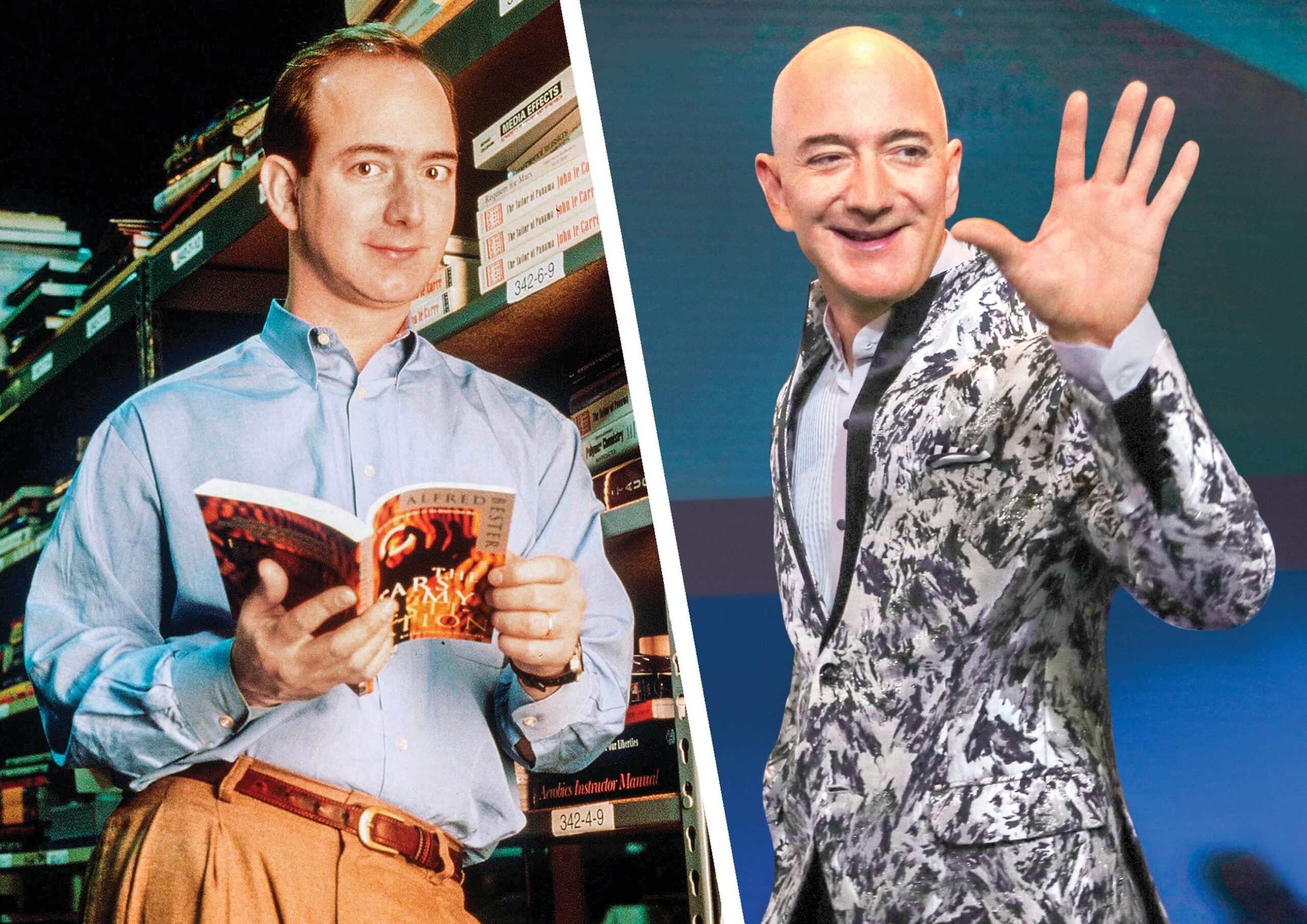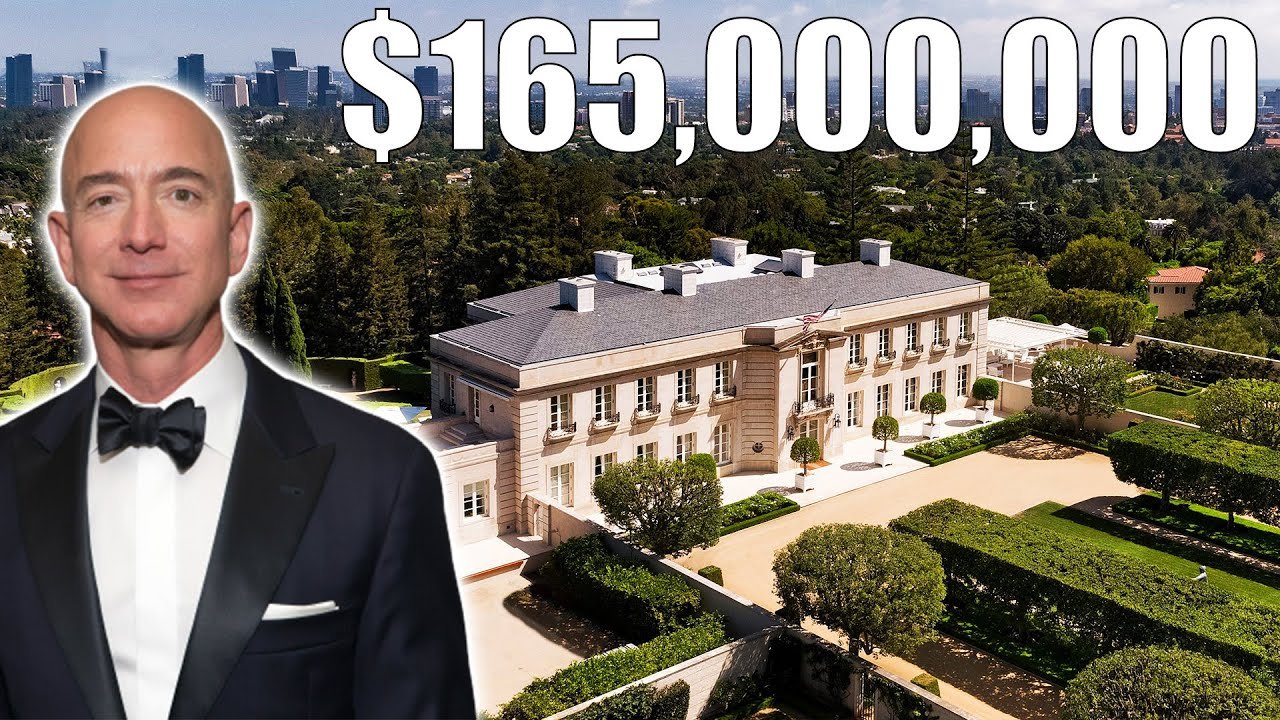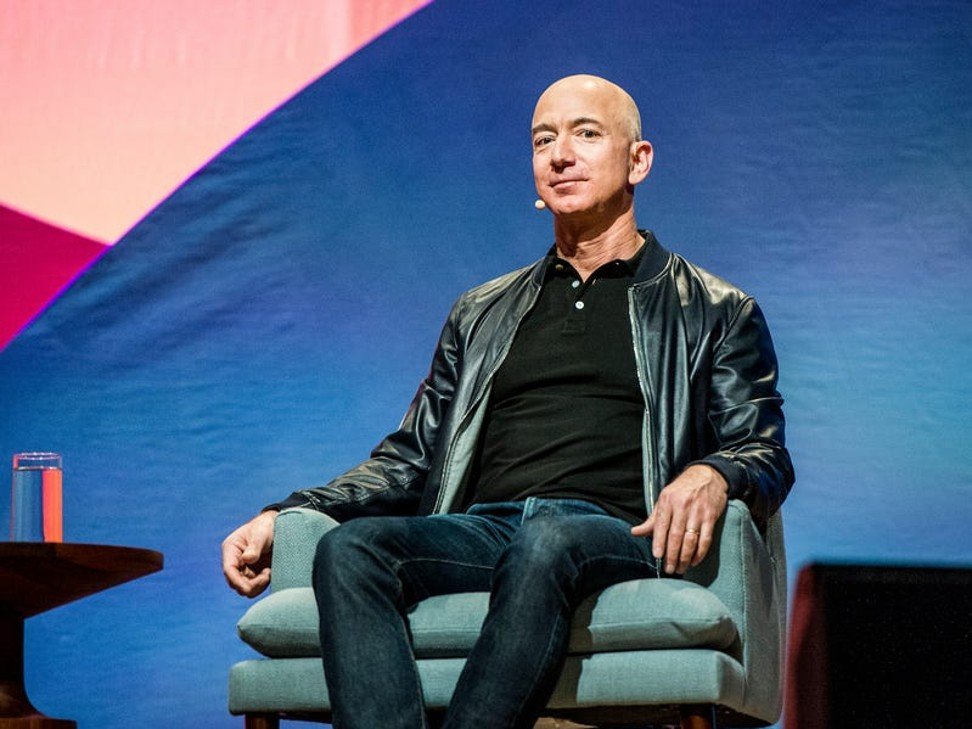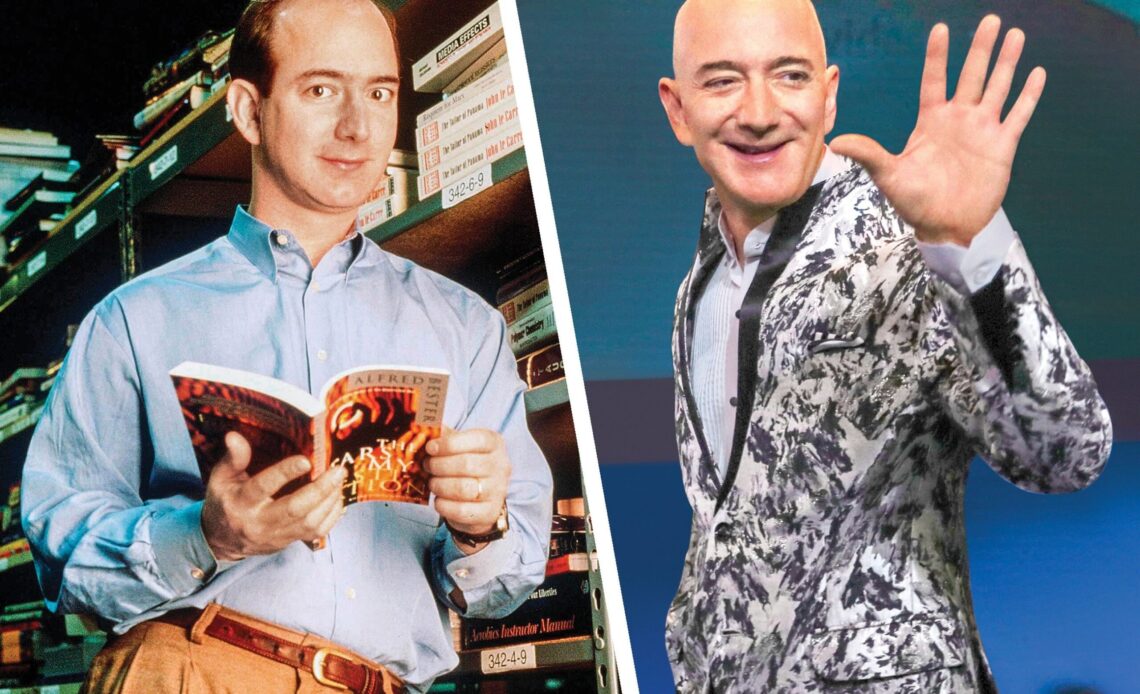Jeff Bezos is a name synonymous with success, innovation, and revolutionizing the way we shop, work, and live. As the founder of Amazon, Bezos has built an empire that started in the most humble of settings—a small garage. Today, he’s one of the richest people in the world, with a fortune worth billions. But the journey from a simple startup idea to global dominance wasn’t easy. In this article, we’ll take a deep dive into Jeff Bezos’ inspiring journey, exploring how he transformed an online bookstore into the tech giant Amazon and beyond.

### The Early Years: A Vision Beyond His Time
Jeff Bezos was born on January 12, 1964, in Albuquerque, New Mexico. Growing up, he was always curious, with a passion for science and technology. Bezos excelled in academics and went on to study electrical engineering and computer science at Princeton University. He graduated in 1986 and quickly found work at a variety of tech and finance companies, including Fitel, Bankers Trust, and the investment firm D. E. Shaw & Co.

While working at D. E. Shaw, Bezos rose through the ranks quickly and became one of the youngest senior vice presidents in the firm’s history. But despite his success in the corporate world, Bezos was always looking for new opportunities. He realized that the internet, still in its infancy in the mid-1990s, was a powerful tool that could transform traditional industries. Inspired by this potential, Bezos decided to take a leap of faith that would change his life forever.
### The Birth of Amazon: From a Garage to Global Dominance
In 1994, Jeff Bezos left his high-powered job in New York City to start his own business. He moved to Seattle and began developing his idea of an online bookstore. With a loan from his parents and a lot of determination, Bezos launched from his garage in July 1995. Initially, Amazon was intended to be a one-stop-shop for books, offering a vast selection of titles that were not easily available in brick-and-mortar stores.

What set Bezos apart was his commitment to customer service and long-term thinking. Amazon’s website was designed to be user-friendly, and it featured customer reviews, which were a revolutionary idea at the time. While many other online businesses focused on short-term profits, Bezos had a clear vision for Amazon’s future, prioritizing growth and customer satisfaction over immediate financial returns.
Despite facing early competition from established book retailers and skeptics who doubted the viability of online businesses, Amazon began to gain traction. Bezos made strategic moves to expand the company’s offerings, and soon Amazon was selling more than just books. It became a marketplace for a wide range of products, including electronics, clothing, and household items.
### Navigating Challenges and Embracing Innovation
The journey to success was not without challenges. Amazon faced numerous hurdles during its early years, including skepticism from investors, financial struggles, and the bursting of the dot-com bubble in the late 1990s. But Bezos’ unwavering belief in his vision and his ability to adapt to changing circumstances kept Amazon on track.
One of Bezos’ key strategies was to reinvest Amazon’s earnings into expanding its infrastructure, technology, and product offerings. While this approach led to early losses for the company, it set the stage for Amazon’s long-term growth. Bezos was not interested in short-term gains; he focused on building a company that could dominate the online marketplace for years to come.
In 2000, Bezos made another bold move by expanding Amazon’s services beyond shopping. He introduced Amazon Web Services (AWS), a cloud computing division that would eventually become a cornerstone of Amazon’s success. Today, AWS is one of the most profitable and fastest-growing segments of Amazon’s business, helping the company diversify its revenue streams.
### Amazon’s Dominance: Expanding Beyond E-Commerce
As Amazon grew, it became much more than just an online retailer. Bezos continued to innovate, introducing new products and services that would redefine entire industries. In 2007, Amazon launched the Kindle, a groundbreaking e-reader that revolutionized the book publishing industry. The Kindle allowed readers to carry entire libraries in their pockets, and it gave Amazon a significant advantage in the digital book market.
Bezos also set his sights on the cloud computing market, and AWS quickly became a leader in the field. With AWS, Amazon was able to offer businesses scalable, cost-effective cloud services, and it soon became a dominant player in the tech industry. AWS’ success helped Amazon become not just an e-commerce giant, but a tech powerhouse with influence in multiple sectors, from entertainment to logistics.
Amazon continued to grow through acquisitions, including the purchase of Whole Foods in 2017, expanding the company’s reach into the grocery industry. Bezos also spearheaded the launch of Amazon Prime Video, which became a direct competitor to Netflix and other streaming services. Today, Amazon is one of the world’s largest companies, offering a wide range of services, including e-commerce, cloud computing, entertainment, logistics, and artificial intelligence.
### Beyond Amazon: Jeff Bezos’ Other Ventures
While Bezos is best known for Amazon, his entrepreneurial spirit has led him to pursue several other ventures. In 2000, he founded Blue Origin, a private aerospace manufacturer and spaceflight services company. Blue Origin aims to make space travel more affordable and accessible, with the long-term goal of enabling human colonization of other planets. Bezos has invested billions into Blue Origin and has made several successful spaceflights, including a historic trip to the edge of space in July 2021.
Bezos has also made headlines with his philanthropic efforts. In 2020, he announced the creation of the Bezos Earth Fund, a $10 billion initiative to combat climate change. Through the Bezos Earth Fund, Bezos aims to support the development of new technologies and strategies to reduce carbon emissions and preserve the planet for future generations.
### Lessons from Jeff Bezos’ Journey
Jeff Bezos’ journey from a garage-based startup to becoming one of the world’s wealthiest individuals offers several key lessons for aspiring entrepreneurs and business leaders:
1. **Vision and Persistence**: Bezos had a clear vision for Amazon from the beginning, and he remained persistent in the face of challenges. His focus on long-term success rather than short-term gains allowed Amazon to flourish in the competitive tech world.
2. **Customer-Centric Approach**: Bezos always prioritized customer satisfaction, believing that focusing on customers would lead to business success. Amazon’s commitment to delivering exceptional service has been a cornerstone of its growth.
3. **Innovation and Adaptability**: Bezos embraced innovation and was not afraid to explore new areas. Amazon’s success is partly due to its ability to adapt to changing market trends, from e-commerce to cloud computing to artificial intelligence.
4. **Calculated Risk-Taking**: Bezos took calculated risks, whether investing in Amazon’s future infrastructure or expanding into new industries. These risks often paid off in the long run, helping Amazon become a dominant global force.
### The Legacy of Jeff Bezos
Jeff Bezos’ journey from a small garage in Seattle to becoming one of the world’s most influential tech billionaires is a testament to the power of vision, hard work, and innovation. Through Amazon, Bezos has changed the way the world shops, communicates, and interacts with technology. His story is a powerful reminder that even the most ambitious dreams can come true with the right combination of persistence, creativity, and strategic thinking.
As Jeff Bezos continues to focus on space exploration and climate change initiatives, his legacy will likely continue to shape the future of technology, business, and humanity for years to come.
